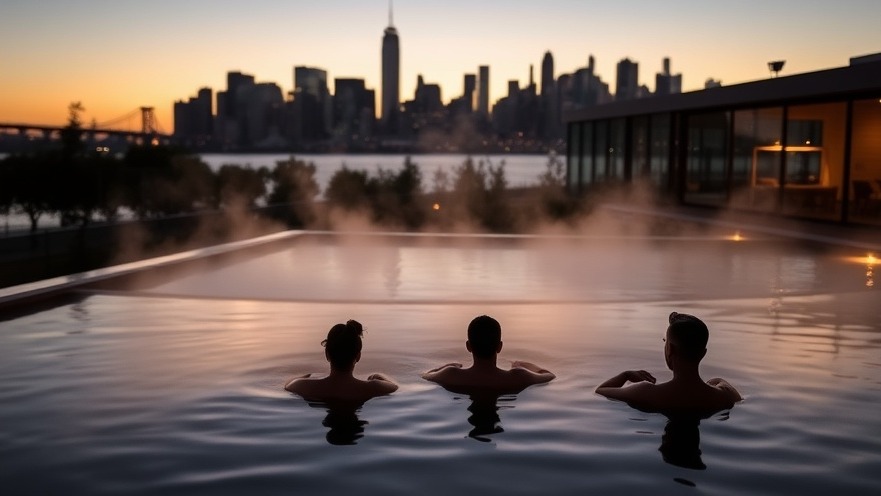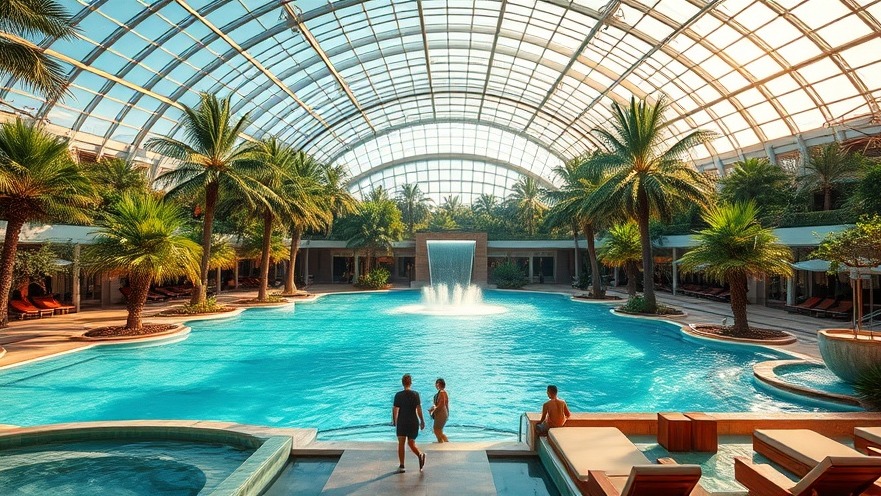
A New Era of Travel Built Around Wellness
Step into the heated outdoor pools of QC NY and you’ll see something remarkable: not just people soaking, but people connecting.
Laughter rises over the water, friends share quiet conversation, and the New York skyline sparkles in the background. This isn’t just a spa day — it’s part of a global movement.
Wellness tourism is now one of the most powerful drivers in hospitality.
The Global Wellness Institute reports that wellness trips account for less than ten percent of all travel, yet they capture nearly one-fifth of overall spending.
For spa professionals, that gap tells a bigger story: guests are willing to pay more when health, rejuvenation, and transformation are at the center of their journey.
From Niche Retreats to Global Phenomenon
Not so long ago, spa travel meant luxury resorts tucked away in the countryside. It was about exclusivity — a special treat for the few who could afford it.
That picture has shifted. Therme Group, based in Europe, pioneered the “wellness for everyone” model with vast facilities like Therme Bucharest, where families, couples, and solo guests can experience thermal bathing, saunas, and botanical gardens at an approachable price.
Founder Robert Hanea explains it simply: “Therme is not a place for millionaires. It’s a place for communities.”
On the other end of the spectrum, SHA Wellness in Spain and now Mexico has positioned itself as the benchmark for medically integrated wellness.
Their programs aren’t just about relaxation — they involve doctors, nutritionists, and health experts guiding guests through detoxes, weight optimization, or longevity plans.
As Vice President Alejandro Bataller often emphasizes, the mission is prevention and measurable improvement, not just pampering.
Together, these approaches have reshaped what “spa” can mean on the world stage.

Milestones That Signaled Change
Every industry has its turning points, and spa tourism has had several:
Therme Bucharest proved that scale and accessibility could coexist, welcoming millions through its doors each year.
QC NY brought a distinctly European social spa concept to the U.S., right in the heart of New York Harbor.
SHA Wellness expanded into Mexico in 2024 and is now preparing its most ambitious project yet in the Emirates: an entire “healthy living island.”
And globally, wellness tourism has surged to hundreds of millions of trips annually, growing faster than traditional travel.
These milestones are more than achievements. They’re signals of changing guest expectations — and they provide valuable lessons for industry leaders.
What Spa Leaders Can Learn From the Giants
1. Accessibility Drives Volume
Therme’s model shows that wellness doesn’t have to be limited to the elite. By keeping entry accessible and layering premium options on top, they’ve built a loyal, diverse guest base.
Spa managers everywhere can apply this by experimenting with tiered pricing: evening passes, group packages, or memberships that meet different budgets without diluting the brand.
2. Health Outcomes Matter
SHA Wellness demonstrates the power of results. Their programs are guided by clinical expertise, offering outcomes guests can track — better sleep, weight management, reduced stress.
Smaller spas may not have in-house doctors, but they can partner with nutritionists, physical therapists, or wellness coaches to add credibility and depth.
3. Urban Wellness Is a Growing Market
City life is stressful. Spas like Remedy Place and Surrenne are reframing wellness as a social experience, giving professionals a healthy alternative to nightlife.
As Dr. Jonathan Leary, founder of Remedy Place, puts it: “We’re redefining what a night out looks like.” For urban spa operators, this means opportunity: create after-work programs or wellness events that encourage connection, not just treatment.
4. Technology Personalizes the Experience
From body-composition scans to wearables that track sleep and recovery, technology is becoming part of the spa toolkit.
Platforms like Book4Time also help streamline bookings and build stronger guest relationships. Even a simple digital upgrade — such as offering wellness tracking or app-based scheduling — can make a spa stand out.
5. Layered Experiences Keep Guests Coming Back
The most successful wellness destinations combine multiple modalities: hydrotherapy followed by massage, sauna paired with cold plunge, nutrition guidance with mindfulness training.
This “stacked programming” encourages longer stays and deeper loyalty, while boosting revenue per guest.

Finding Your Unique Advantage
Not every spa can be a 100,000-square-foot wellness park. And not every business can launch an international longevity clinic. But every spa has the ability to define its unique differentiator.
Will you be the accessible community spa, offering approachable wellness at scale?
The results-driven spa, known for programs that deliver measurable outcomes?
The urban sanctuary, offering professionals a reset close to home?
Or the cultural hub, where wellness is a lifestyle woven into community?
The lesson isn’t to copy Therme or SHA. It’s to study what makes them thrive — and then apply those principles in a way that fits your own market.
Practical Steps You Can Take Now
Here are a few ways spa professionals can act on these insights:
Introduce membership models or flexible access passes to encourage repeat visits.
Partner with health and wellness professionals to create integrated offerings.
Invest in small but impactful tech upgrades, like body scans, digital booking, or personalized recommendations.
Curate community-building events, from mindfulness nights to group contrast therapy sessions.
Reframe your spa as more than a place to relax — position it as a partner in your guests’ long-term wellbeing.
Conclusion: Rising to Meet the Wellness Wave
Wellness tourism isn’t just a passing trend — it’s a new foundation for hospitality. Guests today are seeking transformation, connection, and credible outcomes.
The takeaways are clear:
Make wellness accessible in new ways.
Deliver results guests can feel and measure.
Build community into the experience.
Embrace innovation without losing your personal touch.
As Robert Hanea reminds us, “Wellness is for everyone.” And as Alejandro Bataller of SHA emphasizes, wellness is about improving lives, not just relaxing for a weekend.
For spa leaders, the opportunity is wide open. The future belongs to those who can think bigger, innovate boldly, and design spaces that heal, connect, and inspire. The question is: how will your spa rise to meet this moment?
Explore deeper analysis on spa business trends, treatment evolution, and market shifts in the Industry Trends category, or visit Spa Front News for more industry intelligence and wellness inspiration.
—
Authored by the Spa Front News Editorial Team — a publication of DSA Digital Media, dedicated to elevating the spa industry with expert insights, treatment breakthroughs, and destination features for spa owners, managers, and wellness leaders.
 Add Row
Add Row  Add
Add 




Write A Comment